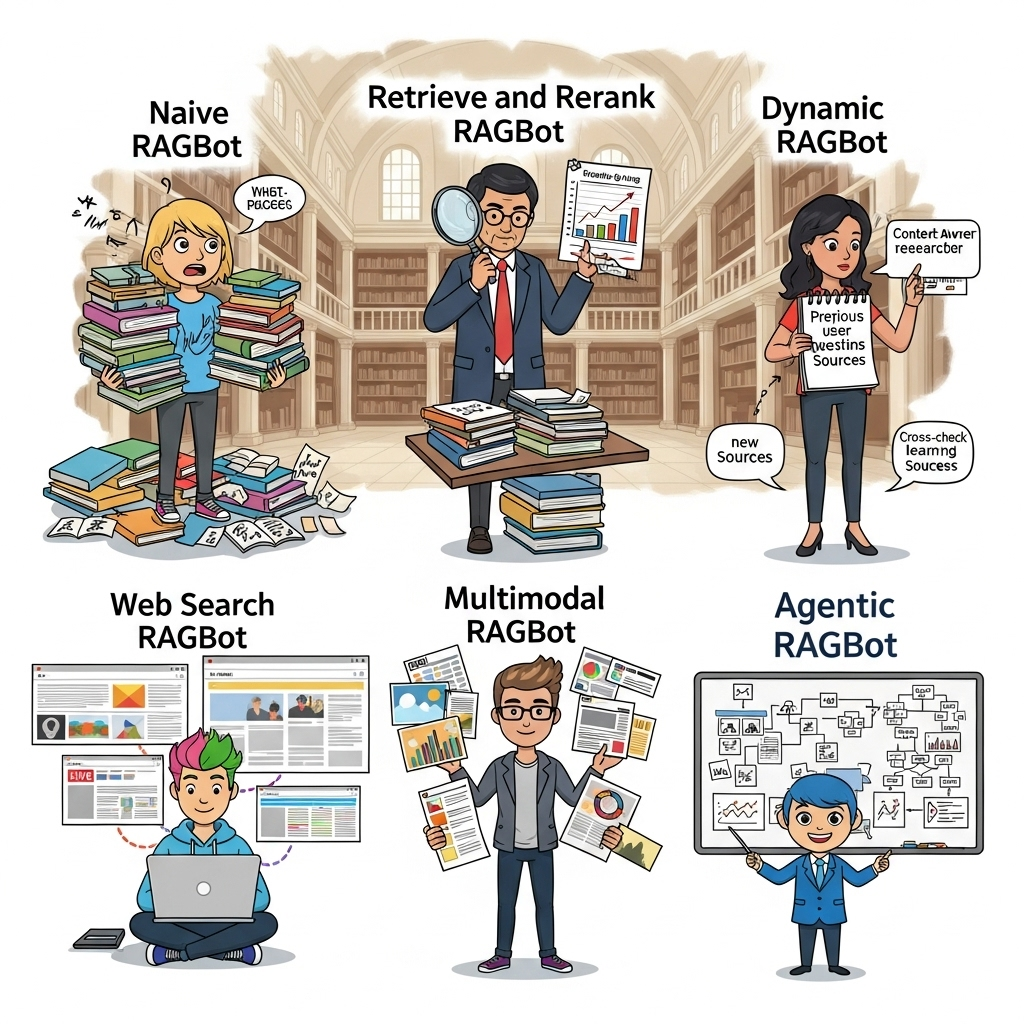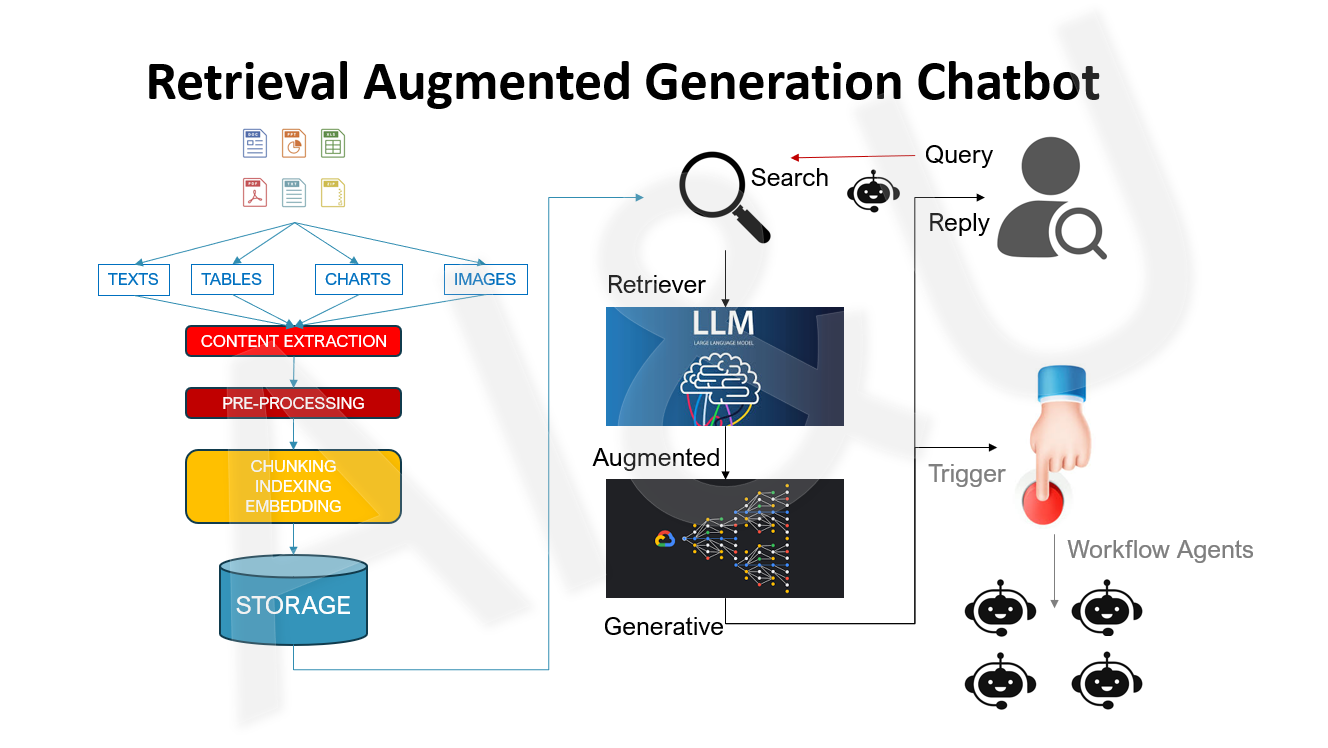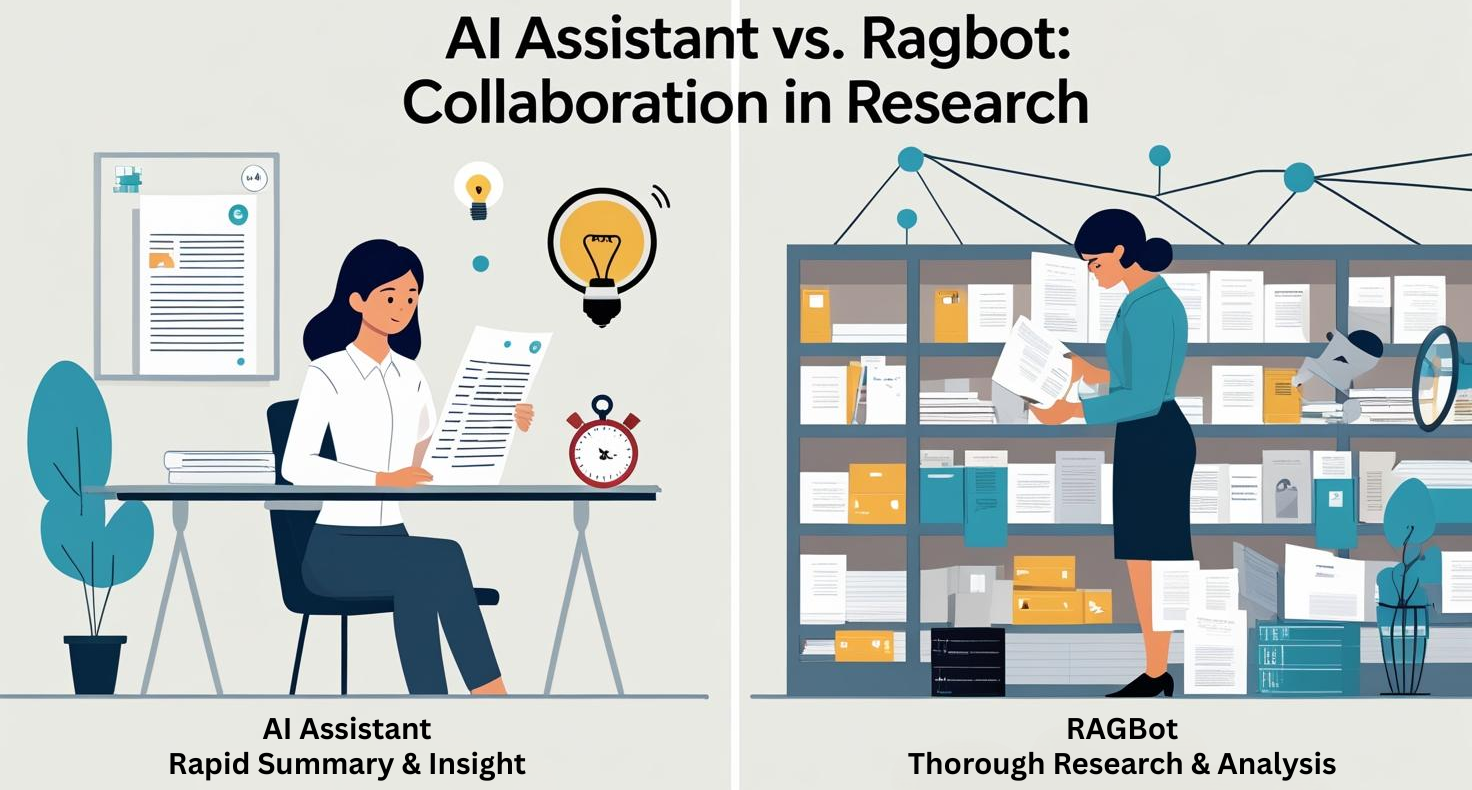In Part 2, we’ll zoom in on one of the biggest points of confusion in the space:
What’s the real difference between an AI assistant (like ChatGPT with a file upload) and a purpose-built RAGBot?
We’ll demystify both approaches, compare how they work under the hood, and explain—using simple analogies—which one makes sense for your business, product, or project.
We will move from the cook and chef analogy into a smart intern or librarian analogy.
If the AI Virtual Assistant or RAGBot is a smart intern, then the rule based bot is a receptionist with a fixed script.
Let’s get into it.
What Is an AI Virtual Assistant?
An AI virtual assistant (like ChatGPT, Claude, or Gemini) is a pre-trained language model that generates responses based on its internal knowledge. Think of it as a brilliant but inexperienced intern—it knows a lot but can’t access external documents unless explicitly provided.
🔸 Virtual Assistant (e.g. ChatGPT without RAG)
🎤 The Knowledgeable but Isolated Assistant
This assistant has read millions of books, articles, and conversations, but they can’t access your private files or the latest internet updates.
- ✅ Great for general knowledge, language, summaries
- ❌ Can’t reference your documents or your context
- 🧠 Analogy: Like a super smart person stuck in a room with no internet or access to your files.
Best For: General questions, language help, creative writing, summaries
📌 What Happens When You Upload a 5-Page FAQ to a Virtual Assistant (like ChatGPT Pro or Claude)?
You’re giving the assistant temporary memory of that document — it can reference it during the current conversation only.
✅ What It Can Do:
- Answer simple questions about that FAQ (as long as it’s not too long or complex).
- Great for small teams or non-developers doing research or support.
❌ What the Limitations Are:
| Limitation | Explanation |
|---|---|
| 🔄 Session memory | The assistant forgets the document after the chat ends. You have to re-upload. |
| 📄 Document size limit | Often capped at 10–20 pages or a few MB. |
| 📚 No scalable file handling | You can’t feed it 100 documents, update them, or fetch answers from the best one. |
| 🔗 No integrations | It can’t respond via Instagram, WhatsApp, websites, etc. You can probably do it via third party integrations but it is challenging to make it as default engine for 8 different platforms. |
| ❌ No reasoning or workflow logic | Doesn’t perform multi-step reasoning or use tools unless manually guided. |
What Is Retrieval-Augmented Generation (RAG)?

A RAGBot combines an LLM with a retrieval system that fetches relevant documents before generating an answer. Imagine hiring a researcher who first checks a library (your database) before responding.
Key Components of a RAGBot:
- Retriever – Searches a knowledge base (e.g., vector database, Elasticsearch).
- Generator – An LLM (like GPT-4) synthesizes the retrieved data into an answer.
- Knowledge Base: Your documents, files, and data sources
- Integration Layer: Connects everything together seamlessly
Types of RAGBots (Analogy-Based Breakdown)
Not all RAGBots are created equal. Just like researchers have different specialties, RAG systems vary in how they retrieve and process information. Here’s a quick tour of the ecosystem—explained through familiar analogies:
| Type | Analogy | Description |
|---|---|---|
| Naive RAG | Asking a librarian for the first book that matches your question | Basic vector search + LLM response. |
| Dynamic RAG | A librarian who adjusts search depth based on query complexity | Smart retrieval with query rewriting or context shaping. |
| Retrieve-and-Rerank RAG | A researcher who reads several books and ranks which ones are most trustworthy | Ranks passages before the LLM generates a response. |
| Multi-modal RAG | A librarian who understands both text and visuals (e.g., graphs, scanned docs) | Handles PDFs, tables, images, and other non-text data. |
| Web Search RAG | An assistant who checks the internet for real-time answers | Combines internal knowledge with live web data. |
| Agentic RAG | A team of assistants, each performing sub-tasks and collaborating | Uses tools, APIs, and multi-step reasoning for complex tasks. |
The Simple Takeaway
Think of RAGBots like a research team:
- Some fetch a single book (Naive RAG).
- Others cross-reference multiple sources (Retrieve-and-Rerank).
- A few even scout the web or analyze images (Web Search/Multi-modal RAG).
- The most advanced operate like a coordinated task force (Agentic RAG).
Which one you need depends on how deep—and how smart—your research has to be.
One Critical Difference: Scalability in Knowledge Work
While AI assistants excel at general tasks, there’s one area where they fundamentally can’t compete: scaling knowledge work. A traditional virtual assistant hits its limits when faced with:
- Thousands of internal documents
- Frequently updated industry data
- Complex multi-source research
RAGBots don’t just answer questions – they institutionalize knowledge. Where an AI assistant might struggle with proprietary data or recent updates, a properly configured RAGBot can:
- Continuously ingest new information
- Cross-reference hundreds of sources
- Maintain accuracy at enterprise scale
This makes RAGBots the only viable solution for:
✔ Legal case research
✔ Medical diagnosis support
✔ Technical documentation systems
✔ Competitive intelligence
✔ Structured Financial Analysis / Report

AI Solutions Comparison: Choosing the Right Tool for the Job:
| Criteria | AI Assistants (e.g., ChatGPT) | AI + File Upload (e.g., ChatGPT Pro) | RAGBots (Custom Solution) | Rule-based Bots (Traditional Chatbots) |
|---|---|---|---|---|
| Setup Time | Immediate | Minutes per session | 2-12 weeks | 1-4 weeks |
| Development Cost | $20-100/month | $20-100/month | $10,000-100,000+ | $5,000-50,000 |
| Maintenance | None | Manual file uploads | Regular knowledge updates | Frequent rule tweaks |
| Scalability | ✅ High (cloud-based) | ❌ Limited by file sizes | ✅ High (with proper infra) | ❌ Manual scaling needed |
| Data Privacy | ❌ Shared with provider | ❌ Shared with provider | ✅ Fully private possible | ✅ Fully private |
| Accuracy for Internal Data | ❌ Low (generic knowledge) | ⚠️ Medium (temporary context) | ✅ High (grounded in docs) | ✅ High (for defined flows) |
| Flexibility | ✅ Very High (creative tasks) | ✅ High (ad-hoc analysis) | ⚠️ Medium (document-bound) | ❌ Low (rigid logic) |
| Integration Complexity | ✅ Low (API calls) | ⚠️ Medium (file handling) | ❌ High (pipelines needed) | ⚠️ Medium (scripting) |
Should You Upload Sensitive Documents to AI Assistants? A Security Reality Check
The Short Answer:
For highly sensitive materials – legal contracts, patient records, proprietary research – standard AI assistants (ChatGPT, Gemini, etc.) should never be your first choice. Here’s why:
Key Risks of Uploading to General AI Assistants:
- Training Data Uncertainty
- Many platforms reserve the right to use uploads for model improvement (check your provider’s TOS)
- Even with “private mode,” breaches or leaks remain possible
- Lack of Enterprise Controls
- No granular access permissions
- Difficult to audit/document access
- Typically lack data residency guarantees
- Retention Ambiguity
- You can’t always verify when/if files are truly deleted
- Some services maintain temporary copies without clear timelines
When Uploading Might Be Acceptable:
✅ Non-sensitive drafts (e.g., brainstorming marketing copy)
✅ Publicly available documents (annual reports, press releases)
✅ Using enterprise-grade solutions (Microsoft Copilot with Purview, AWS Q with KMS encryption)
The RAGBot Advantage for Sensitive Data:
Private RAG implementations solve this by:
- Keeping documents in your controlled storage (SharePoint, S3, etc.)
- Applying existing permissions/access controls
- Enabling full audit trails
- Avoiding third-party data ingestion
What’s Coming Next: HYBRIDS!
The Future is Hybrid: Getting the Best of Both Worlds
Congratulations! You’ve now mastered the chatbot spectrum—from rigid rule-based systems to intelligent AI solutions. You can confidently:
✔ Distinguish between AI Virtual Assistants (general knowledge) and RAGBots (domain-specific expertise)
✔ Decode AI jargon, recognizing how different RAGBot types solve unique business challenges
✔ Navigate conversations about retrieval-augmented generation like a pro
The most effective AI strategy doesn’t force an “either/or” choice—it intelligently combines AI assistants and RAGBots where each excels. Forward-thinking companies are already leveraging hybrid systems that:
- Use ChatGPT-like assistants for creative tasks and general Q&A
- Deploy RAGBots for data-sensitive, domain-specific queries
- Orchestrate both through smart routing (e.g., “Is this about our internal docs? → RAGBot : Else → Assistant”)
What’s Coming in Part 3: Hybrids Unlocked
In our next installment, we’ll break down:
🔧 Hybrid Architectures Demystified
Types of Hybrids and its components
🛠️ Why Hybrid Bot is the way to go
Why customers are choosing hybrid Bots?
💡 How to Choose the Right Chatbot Solution for Your Needs
We will also explain how you can avoid getting scammed or choosing the wrong chatbot type.
Stick around and find out!
(P.S. Who’s the secret weapon behind a high-performing RAGBot? A data scientist—the architect who bridges AI theory and real-world execution. They don’t just tweak algorithms; they orchestrate retrieval precision, LLM integration, and scalability, ensuring your bot delivers accuracy without compromises. After all, RAG isn’t just about stacking tech—it’s about engineering trust in every response.)
A topic that I will probably explore with more in-depth after the Part 3 – Hybrid ChatBots!
